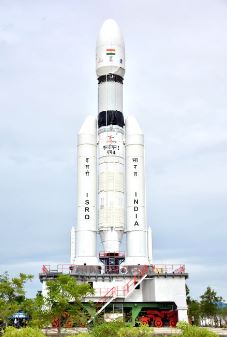
Chandrayaan helped moon lander make pinpoint landing, says Japan…Chandrayaan helped moon lander make pinpoint landing, says Japan…
Japan’s space agency has confirmed its moon lander successfully achieved its pinpoint landing on the moon on January 19. The Japan Aerospace Exploration Agency (JAXA) could not confirm the landing precision on the day after the spacecraft’s solar panels failed to produce power. JAXA officials knew the lander had performed a controlled descent because none of its other components appeared to have been damaged. However, a JAXA statement on Thursday said one of the lander’s two main engines failed during its descent.
As the Smart Lander for Investigating Moon (SLIM) touched down near Shioli crater, Japan became the fifth country to soft land a robotic instrument on the moon, months after India’s Chandrayaan 3 succeeded in August 2023.
JAXA built SLIM to be light and sent it towards the moon on a loopy path that conserved fuel. The gains were to help SLIM on its primary mission: to land within a small 100X100 m patch on the moon.
So far, spacecraft planning to land on Mars and the moon were allowed to do so within large patches hundreds of metres wide. In comparison, SLIM’s designated patch is tiny, giving the spacecraft its nickname “moon sniper”. According to the JAXA statement, SLIM was within 10 m of its designated landing spot until it was 50 m above the surface.
At this stage, SLIM used maps of the moon’s surface in this area acquired by the orbiter of the Chandrayaan2 mission. SLIM’s computer overlaid them with images captured by its navigation camera, and used the result to spot obstacles to its descent.
“It is highly likely that the main engine was already affected by the loss of function when the second obstacle detection occurred,” the statement added.
This is because SLIM’s positional accuracy had increased from three to four metres during the first obstacle detection exercise to 10 m in the second. The engine’s failure eventually caused SLIM to drift to a spot 55 m east, where it landed. Whether this failure is related to the solar panels’ inability to generate power is under investigation.
Japan’s space agency has confirmed its moon lander successfully achieved its pinpoint landing on the moon on January 19. The Japan Aerospace Exploration Agency (JAXA) could not confirm the landing precision on the day after the spacecraft’s solar panels failed to produce power. JAXA officials knew the lander had performed a controlled descent because none of its other components appeared to have been damaged. However, a JAXA statement on Thursday said one of the lander’s two main engines failed during its descent.
As the Smart Lander for Investigating Moon (SLIM) touched down near Shioli crater, Japan became the fifth country to soft land a robotic instrument on the moon, months after India’s Chandrayaan 3 succeeded in August 2023.
JAXA built SLIM to be light and sent it towards the moon on a loopy path that conserved fuel. The gains were to help SLIM on its primary mission: to land within a small 100X100 m patch on the moon.
So far, spacecraft planning to land on Mars and the moon were allowed to do so within large patches hundreds of metres wide. In comparison, SLIM’s designated patch is tiny, giving the spacecraft its nickname “moon sniper”. According to the JAXA statement, SLIM was within 10 m of its designated landing spot until it was 50 m above the surface.
At this stage, SLIM used maps of the moon’s surface in this area acquired by the orbiter of the Chandrayaan2 mission. SLIM’s computer overlaid them with images captured by its navigation camera, and used the result to spot obstacles to its descent.
“It is highly likely that the main engine was already affected by the loss of function when the second obstacle detection occurred,” the statement added.
This is because SLIM’s positional accuracy had increased from three to four metres during the first obstacle detection exercise to 10 m in the second. The engine’s failure eventually caused SLIM to drift to a spot 55 m east, where it landed. Whether this failure is related to the solar panels’ inability to generate power is under investigation
